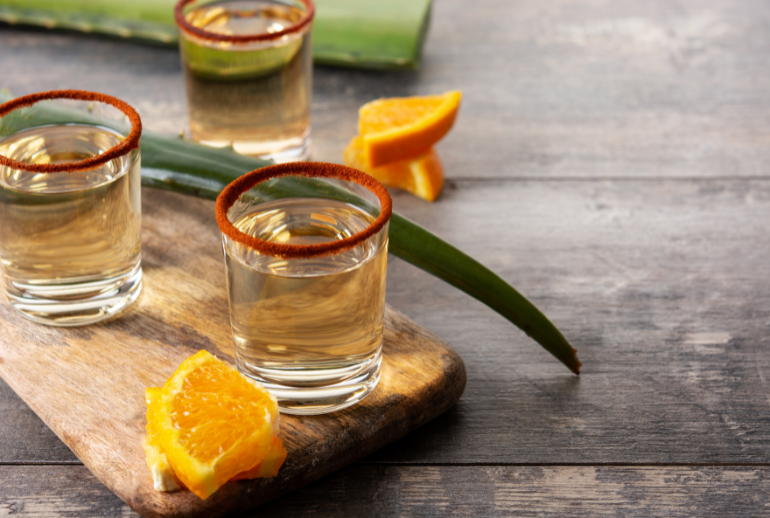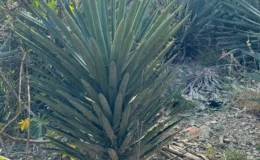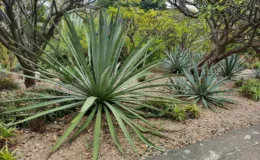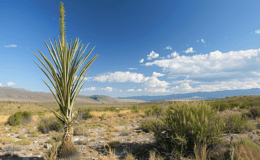Where does mezcal come from? What makes it unique compared to other spirits like tequila? And why are so many people starting to fall in love with it? In this article, we’ll explore the history of mezcal, where it’s produced, and why it’s become so popular around the world.
What is Mezcal?
Mezcal is a type of distilled spirit made from the agave plant. The term “mezcal” comes from the Nahuatl word mexcalli, which means “oven-cooked agave.” The production process involves roasting the agave hearts, or piñas, in an earthen pit oven for several days before crushing and fermenting them. Once the agave juice is fermented, it is distilled into a clear, smoky, and complex spirit.
Mezcal is often compared to its more popular cousin, tequila, which is also made from agave. However, there are some key differences between the two. While tequila can only be made from one specific type of agave (blue Weber), mezcal can be made from any of over 30 different species of agave. Additionally, tequila is only produced in certain regions of Mexico, while mezcal can be made throughout the country.
Historical Production of Mezcal
The production of mezcal can be traced back to pre-Columbian times. The agave plant was considered sacred by the Aztecs and was used for medicinal and spiritual purposes. They also used the plant to create pulque, a fermented beverage made from the agave sap.
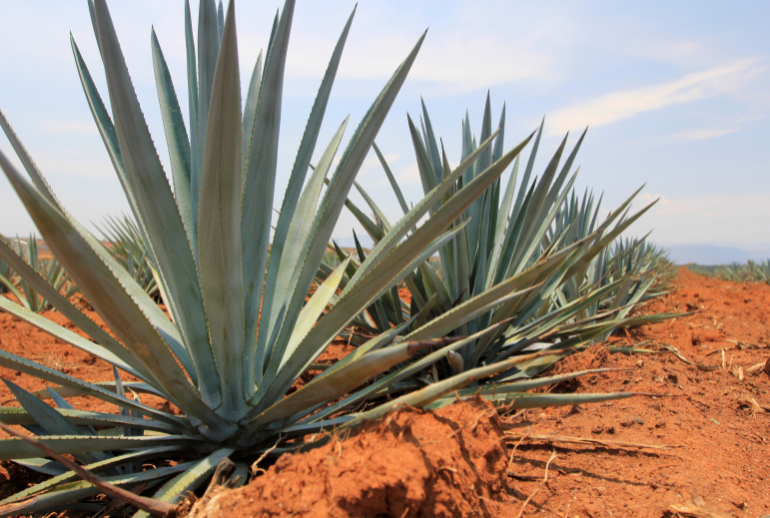
After the Spanish conquest of Mexico in the 16th century, the distillation of agave spirits began to develop. The Spanish introduced the use of copper stills and other distillation techniques, which allowed for the production of a wider variety of spirits.
Mezcal was produced in Mexico for centuries, but it wasn’t until the 20th century that it began to gain popularity outside of Mexico. In the 1950s, mezcal was exported to the United States for the first time, but it wasn’t until the 1990s that it started to gain mainstream popularity in the U.S. Today, mezcal is consumed around the world and has become a popular spirit for mixologists and cocktail enthusiasts.
Where Does Agave Grow Best?
Agave is native to Mexico and Central America, and it can grow in a variety of different climates and terrains. However, the quality of the agave plant can vary depending on where it is grown. The best agave for mezcal production is generally considered to come from the state of Oaxaca in southern Mexico, where the agave is grown in high altitudes and mineral-rich soils. The agave grown in Oaxaca is known for its complex flavors and aromas, which are a result of the region’s unique terroir.
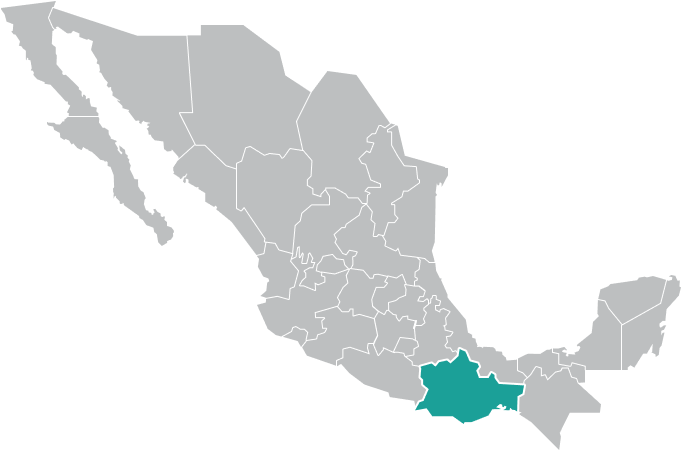
Other states in Mexico where agave is grown for mezcal production include Guerrero, Michoacán, Durango, San Luis Potosí, and Zacatecas. Each of these regions produces agave with its own unique characteristics and flavors, which can impact the flavor of the mezcal produced from that agave.
Mezcal vs. Tequila
While both mezcal and tequila are made from agave, there are some key differences between the two spirits. Tequila can only be made from one specific species of agave, the blue Weber agave, which is grown primarily in the state of Jalisco and a few other regions in Mexico. Mezcal, on the other hand, can be made from any of over 30 different species of agave, and can be produced in a number of different regions throughout Mexico.
Another major difference between mezcal and tequila is the production process. Tequila is typically made using industrial methods, with large-scale production facilities and modern machinery. Mezcal, on the other hand, is often produced using traditional methods that have been passed down for generations. The piñas are cooked in earthen pits, and the juice is often fermented using wild yeasts, which can result in a wide range of unique flavors and aromas.
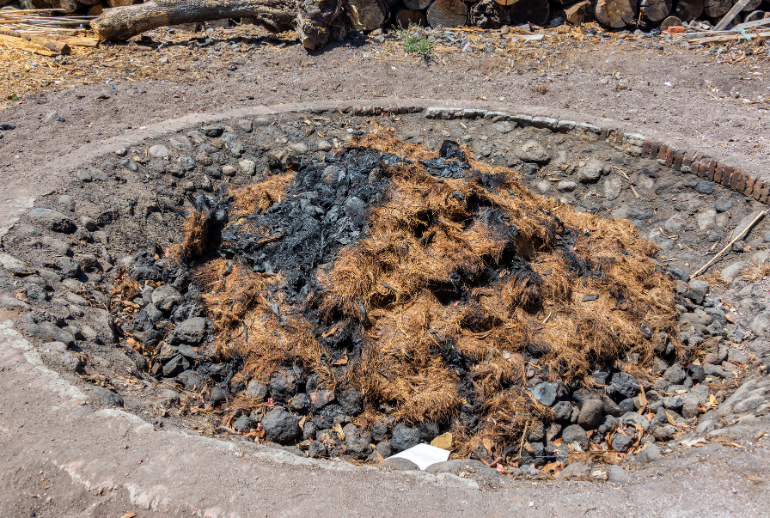
Finally, mezcal is known for its smoky flavor, which is a result of the piñas being cooked in earthen pits. This is in contrast to tequila, which typically has a more subdued flavor profile. While some tequilas may have a hint of smokiness, it is not as pronounced as it is in mezcal.
Specific Cities and Regions Where Mezcal is Produced
Mezcal can be produced in a number of different regions throughout Mexico, but there are a few specific cities and regions that are particularly known for their mezcal production. Here are a few of the most important regions:
Oaxaca
Oaxaca is the heart of mezcal production in Mexico, and is considered by many to be the birthplace of the spirit. The state is home to over 70% of all agave species, and produces some of the best mezcal in the world. There are several regions within Oaxaca that are particularly known for their mezcal production, including:
Santiago Matatlán: Known as the “World Capital of Mezcal,” Santiago Matatlán is a small town located about an hour outside of Oaxaca City. It is home to dozens of mezcal distilleries, and is considered by many to be the epicenter of mezcal production in Mexico.
Miahuatlán: This region is located in the southern part of the state, and is known for producing mezcal from the Tobalá agave, which is considered to be one of the best agave species for mezcal production.
San Dionisio Ocotepec: This region is located in the central part of the state, and is known for producing mezcal from the Espadín agave, which is the most commonly used agave species for mezcal production.
Guerrero
Guerrero is located in the south-central part of Mexico, and is known for producing some of the best mezcal in the country. The region is particularly known for its mezcal made from the Cupreata agave, which is grown in the mountainous regions of the state.
Michoacán
Michoacán is located in western Mexico, and is known for producing mezcal from the Cenizo agave. This agave is particularly difficult to cultivate, which makes it a rare and prized variety of agave for mezcal production.
Durango
Durango is located in the northern part of Mexico, and is known for producing mezcal from the Salmiana agave. This agave is known for its large size and unique flavor profile, which can include notes of honey, vanilla, and caramel.
Specific Mezcal Brands and Where They are Made
There are dozens of different mezcal brands on the market, each with its own unique flavor profile and production methods. Here are a few examples of popular mezcal brands and where they are made:
Del Maguey
Del Maguey is one of the most well-known mezcal brands in the world, and is particularly known for its single-village mezcal. Each variety of Del Maguey mezcal is made in a different village in Oaxaca, using traditional production methods that have been passed down for generations.
Montelobos
Montelobos is a mezcal brand that is produced in Oaxaca using traditional methods. The brand is particularly known for its mezcal made from the Espadín agave, which is aged for six months in oak barrels to give it a smooth, complex flavor.
Los Danzantes
Los Danzantes is a mezcal brand that is produced in Oaxaca using traditional methods. The brand produces a variety of different mezcal varieties, including mezcal made from the Espadín, Tobalá, and Tepeztate agaves.
Different Agave Species and Where They Grow Best
As mentioned earlier, there are over 30 different species of agave that can be used to make mezcal. Each species of agave has its own unique flavor profile, and is best suited to certain growing conditions. Here are a few examples of popular agave species and where they grow best:
Espadín
The Espadín agave is the most commonly used agave species for mezcal production, and is grown in a number of different regions throughout Mexico. It is a hardy plant that can grow in a variety of different climates and terrains.
Tobalá
The Tobalá agave is considered to be one of the best agave species for mezcal production, and is known for its complex flavors and aromas. It is a small, slow-growing plant that is primarily found in the mountainous regions of Oaxaca.
Tepeztate
The Tepeztate agave is a rare and prized variety of agave that is known for its unique flavor profile. It is a large, slow-growing plant that is primarily found in the mountainous regions of Oaxaca.
Various Mezcal Production Methods in Different Regions
While the basic process of mezcal production is the same throughout Mexico, there are some regional variations in production methods that can affect the flavor and aroma of the finished product. Here are a few examples:
Oaxaca
In Oaxaca, mezcal production is often done using traditional methods that have been passed down for generations. This includes using a stone or wood wheel to crush the cooked agave, and then distilling the resulting liquid in a clay or copper pot still.
Guerrero
In Guerrero, mezcal production often involves cooking the agave in an underground pit oven, known as a horno. This gives the mezcal a distinct smoky flavor.
Michoacán
In Michoacán, mezcal production often involves adding wild fruits or herbs to the fermented agave mash, which can give the finished mezcal a unique flavor profile.
Conclusion
Mezcal has a rich history and cultural significance in Mexico, and is enjoyed by people all over the world for its complex flavors and aromas. While the exact origin of mezcal is still a topic of debate among historians and scholars, it is clear that the production of mezcal has been an important part of Mexican culture for centuries.
Today, mezcal is produced in a number of different regions throughout Mexico, each with its own unique flavor profile and production methods. Whether you prefer a mezcal made from the Espadín, Tobalá, or Tepeztate agave, or one that is produced using traditional methods in Oaxaca, there is sure to be a mezcal out there that suits your taste.
As mezcal continues to gain popularity around the world, it is important to remember and honor the cultural traditions and history that make this spirit so special. So the next time you enjoy a glass of mezcal, take a moment to savor the complex flavors and aromas, and appreciate the rich cultural heritage that went into its production.

